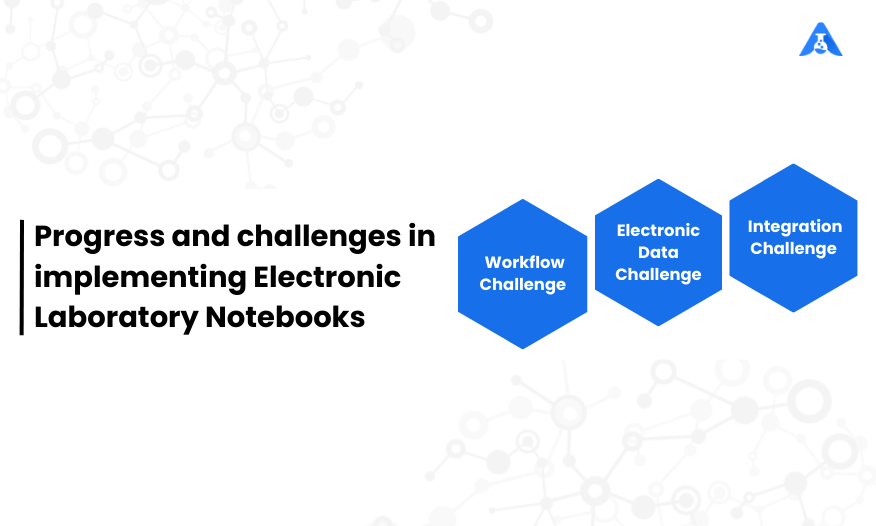Electronic Laboratory Notebook (ELN) plays a vital role in the laboratories in the areas of bench level analysis, and point of analysis by providing real-time automation and control of testing procedures. Cloud-based ELNs ensure that procedures are carried out in an automated manner by the way direct integration with instruments (i.e. data is collected directly from instruments), the computations are performed, and inventory is checked and updated. The documents and records are stored electronically in a secured server by ELN. Laboratory notebook software also ensures that standard operating procedures are stored in the system and followed during the analysis. ELN ensures that data integrity principles are adhered to.
ELN follows the Food and Drug Administration’s (FDA) 21 CFR Part 11 regulations for digital signatures and electronic records management during quality systems management. The ELN complies with the FDA’s requirement that electronic copies be readily available for inspection by employing a standard PDF and other Microsoft formats for data storage, export, and printing. ELNs are an important part of the laboratory informatics life cycle, from early development to late development. The ability to configure workflows ensures pharmaceutical and biotechnology companies can ensure accountability and error-free operations.
Many laboratories have already started replacing paper notebooks with Electronic lab notebooks. The goal of deploying an ELN is to help scientists do better work in the lab. This is primarily concerned with increasing experiment execution and documentation efficiency. The ELN deployment’s effectiveness and return on investment (ROI) are considerably increased when integrated with other instruments and systems in the laboratory.
The following are some of the challenges in implementing ELN in a laboratory
Challenges of ELN
- The Workflow Challenge
The ELN should provide the user interface for the administrative users to configure workflow for creation, review, and approval processes. The degree to which workflow can be accommodated depends on the user’s needs as well as Good Manufacturing Practices guidelines. An ELN is developed in-house or a commercial off-the-shelf product can be used. Each presents its own set of difficulties. User adoption of a system that fails to match the user’s expectations is not possible as it will lead to wastage of time and user dissatisfaction. The system’s conformance to the established requirements determines the success of an ELN implementation.
The Electronic Data Challenge
The transition from paper to electronic as the medium for documenting experiments introduces new challenges that must be addressed as part of the ELN implementation, especially the protection of the electronic record and the system’s availability. It is required that five to ten years after it was developed, the electronic record may be required to sustain patent interference. As a result, the electronic record must be established and safeguarded in such a way that its reliability cannot be disputed. This necessitates a thorough examination of both the record-keeping system and the record-management process. As a result, it appears that the benefits outweigh the risks, and ELNs with electronic signatures are becoming more relevant and they play a very vital role. The electronic record is legitimate, unalterable, and retrievable in human-readable form. Electronic signatures provide a technique for verifying record validity, including author/witness confirmation and event dates. An audit trail shows that the record has not been tampered with in any way. Word, PDF, XML, and CSV are the most used formats for electronic records because they offer the best recovery options. All of these features should be confirmed as part of the e-signature functionality, whether delivered by the ELN or another system. Documented procedures that specify how the electronic record is created and handled as part of the standard business process must be in place to support this.
The Integration Challenge
The problem of integrating the ELNwith the loosely coupled systems is that there must be the availability of appropriate interfaces in the ELN as well as in other in-house developed legacy systems. One such example is the requirement to integrate ELN with a legacy reagent inventory system or a standard ERP inventory system. A lot of functional requirement analysis, as well as technical architecture design, must be carried out before the implementation of such integration.
Paper Notebooks Limitations
- When sharing data from different notebooks, a scientist must duplicate the data and deliver it to the requesting scientist. This requires time and effort, and it diverts the scientist’s attention away from his or her main task.
- It also causes problems for the scientist who receives and uses the data.
- The content of paper-based experiments is not indexed for searching, making it difficult to record and keep the audit trail for the information included inside the duplicated pages.
- Paper notebooks can be problematic when capturing data in the same experiment and when the notebook necessitates the scientists’ physical contact.
- When it is unclear who was accountable for specific entries inside an experiment, signing and witnessing can prove problematic.
Advantages of ELNs
For the scientist, the electronic lab environment offers numerous advantages: Such as;
- Data input is consistent and validated to avoid errors.
- Documentation time is greatly reduced.
- Review times are minimized.
- Data that is simple to search; information capture and reuse, avoiding repetition and innovation.
- Sharing experiments with authorized users is possible.
- Personalized dynamic real-time reporting
- Illegibility issues caused by difficult-to-read handwriting are eliminated.
- Problems caused by lost or damaged paper forms or notebooks are eliminated.
- Costs of paper storage and retrieval are reduced.
Success Factors for ELN Implementation
A successful ELN implementation allows scientists to easily design and modify the experiments, as well as share the experiments with authorized users. The integration of ELN with other laboratory applications that stores and processes compound data, chromatographic data as well as LIMS, SDMS, and inventory systems would result in reduced time spent manually entering data. Scientists acquire visibility into research to track ongoing studies, assess efficiency, and make informed judgments.
Conclusion
Integrating the ELN with organizational resources has the potential to significantly improve enterprise research. The effectiveness and ROI of ELN deployment are considerably increased when the ELN is integrated with other electronic-based technologies in the laboratory. When generating and reviewing experiments, significant time savings can be realized while data integrity is enhanced. The ELN removes physical obstacles to sharing data and cooperating on experimental work creation and documentation. Try out Logilab ELN now! schedule a demo here





